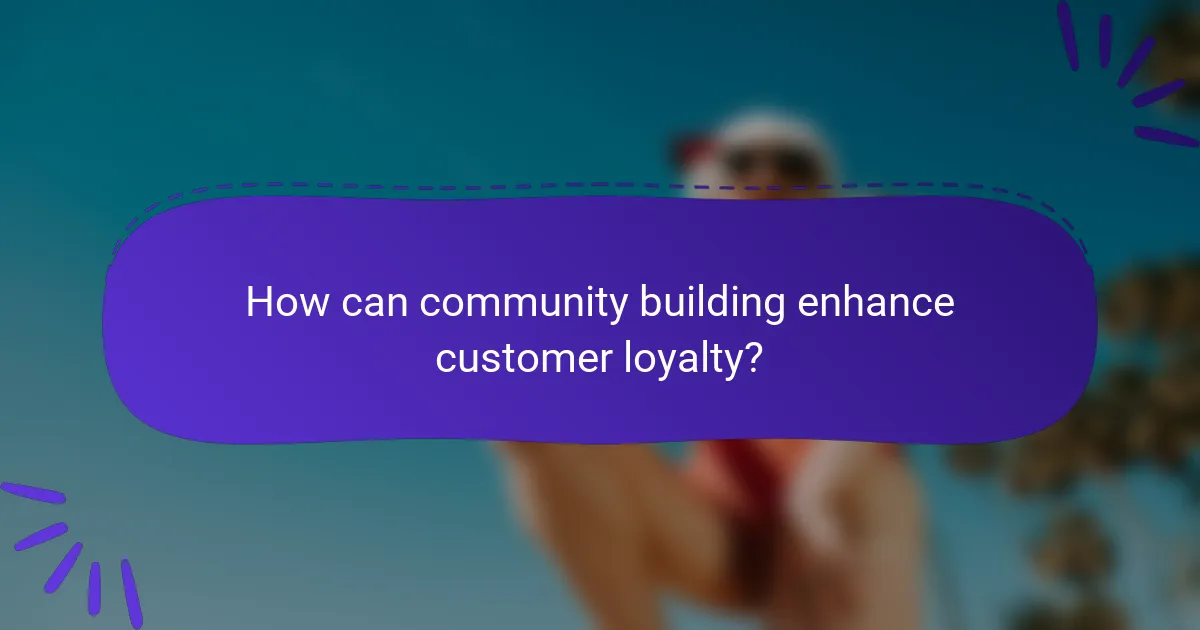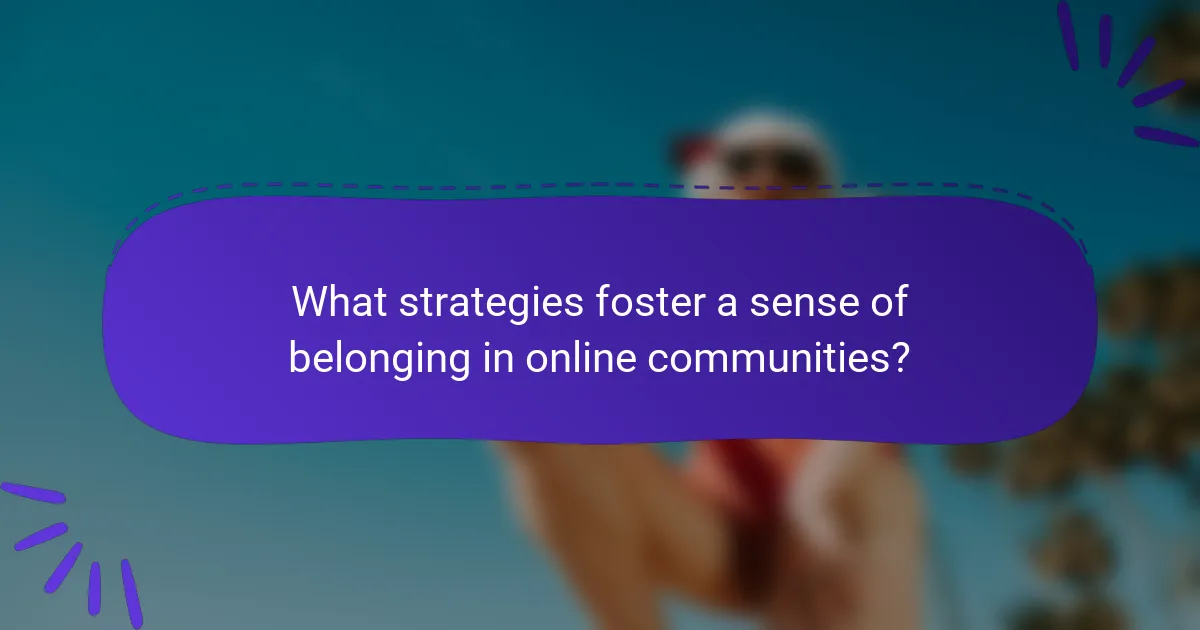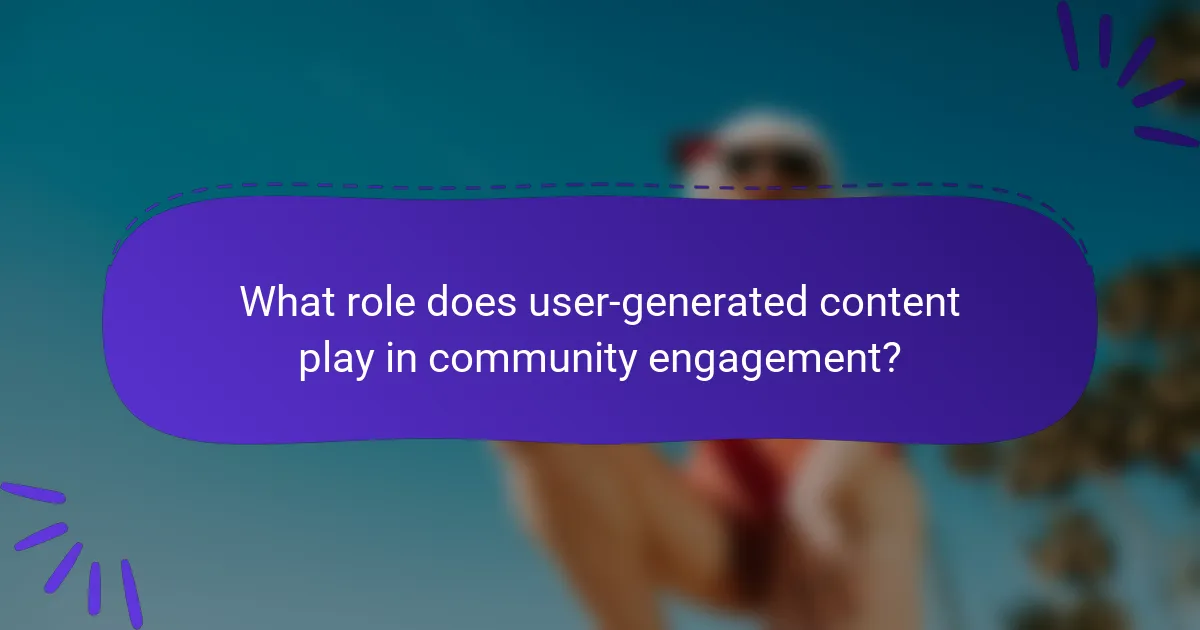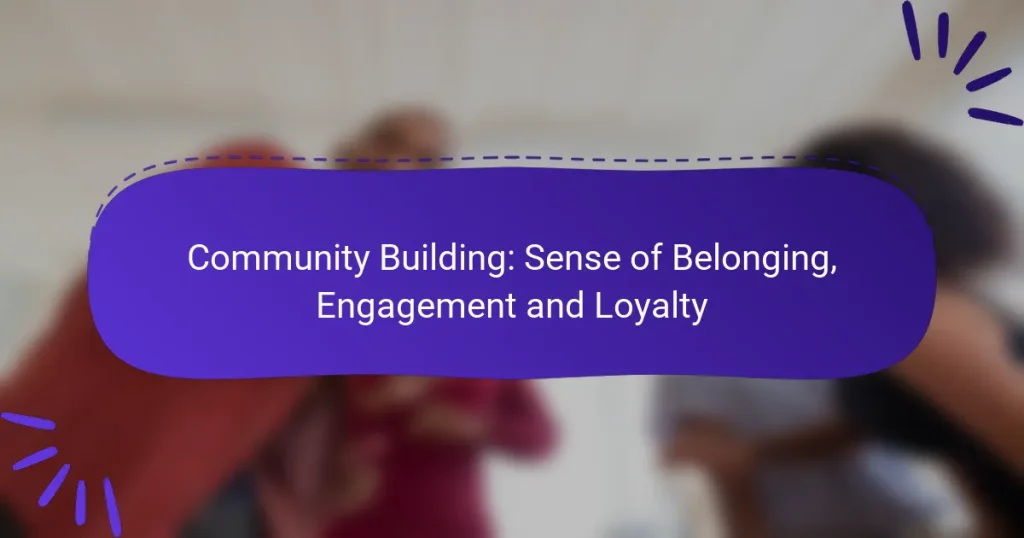Community building is essential for enhancing customer loyalty by creating a strong sense of belonging and engagement. When customers feel valued and connected within a brand’s community, they are more inclined to remain loyal and engage in repeat purchases. By fostering inclusivity and encouraging participation, brands can cultivate vibrant communities that reward loyalty and facilitate meaningful interactions.

How can community building enhance customer loyalty?
Community building enhances customer loyalty by fostering a sense of belonging and engagement among customers. When customers feel connected to a brand and its community, they are more likely to remain loyal and make repeat purchases.
Increased repeat purchases
Building a community encourages customers to return for future purchases. When customers feel part of a group, they are more inclined to support the brand that aligns with their values and interests. This can lead to increased repeat purchases, as loyal customers often prioritize brands they feel connected to.
To capitalize on this, businesses can create loyalty programs or exclusive community events that reward repeat customers. Offering personalized experiences can also enhance this connection, making customers more likely to choose your brand over competitors.
Stronger brand advocacy
A strong community can turn customers into brand advocates who promote your products to others. When customers feel a sense of belonging, they are more likely to share their positive experiences with friends and family, effectively becoming ambassadors for your brand.
Encouraging user-generated content, such as testimonials or social media posts, can amplify this advocacy. Brands can also incentivize referrals by offering discounts or rewards for customers who bring in new members, further strengthening loyalty.
Enhanced customer feedback
Community building facilitates open communication between customers and brands, leading to valuable feedback. Engaged customers are more willing to share their opinions, helping businesses understand their needs and preferences better.
To gather feedback effectively, brands can create forums or surveys within their community platforms. Actively responding to customer suggestions not only improves products but also reinforces the sense of belonging, making customers feel valued and heard.

What strategies foster a sense of belonging in online communities?
Fostering a sense of belonging in online communities involves creating an inclusive environment where members feel valued and connected. Key strategies include personalized communication, offering exclusive member benefits, and organizing regular engagement activities.
Personalized communication
Personalized communication enhances the feeling of belonging by making members feel recognized and appreciated. Tailoring messages to individual preferences, interests, and past interactions can significantly improve engagement. For instance, addressing members by name in emails or responding to their specific comments can create a more personal connection.
Consider segmenting your community based on interests or demographics to send targeted messages. This approach can lead to higher engagement rates and a stronger sense of community. Avoid generic messages that may alienate members or make them feel unnoticed.
Exclusive member benefits
Offering exclusive benefits to community members can strengthen loyalty and enhance their sense of belonging. These benefits might include access to special content, discounts, or early registration for events. For example, a community focused on fitness could provide members with exclusive workout plans or nutrition guides.
Make sure the benefits are meaningful and relevant to your audience. Regularly assess what members value most and adjust offerings accordingly. Avoid making benefits too complicated or difficult to access, as this can lead to frustration and disengagement.
Regular engagement activities
Regular engagement activities help maintain a vibrant community atmosphere and encourage interaction among members. These can include webinars, Q&A sessions, or themed discussions that allow members to share experiences and insights. For example, hosting a monthly virtual meet-up can foster connections and strengthen relationships.
Ensure that activities are varied and cater to different interests within the community. Providing a mix of casual and structured events can appeal to a broader audience. Avoid scheduling conflicts with major holidays or events that might limit participation, as this can reduce engagement and community cohesion.

How do successful brands build engaged communities?
Successful brands build engaged communities by fostering a sense of belonging, encouraging participation, and rewarding loyalty. They create platforms and programs that facilitate interaction, allowing members to connect and share experiences while feeling valued.
Starbucks’ Rewards Program
Starbucks’ Rewards Program exemplifies community engagement by offering customers incentives for their purchases. Members earn stars for every dollar spent, which can be redeemed for free drinks and food items. This not only encourages repeat business but also creates a sense of belonging among members who feel recognized for their loyalty.
The program includes personalized offers and exclusive promotions, enhancing the customer experience. By integrating a mobile app, Starbucks allows users to order ahead, pay, and track their rewards, making participation convenient and engaging.
LEGO Ideas platform
LEGO Ideas is a platform where fans can submit their own designs for new LEGO sets, fostering creativity and community involvement. Users can vote on submissions, and popular ideas may be turned into official products, giving creators a sense of ownership and accomplishment.
This initiative not only engages the community but also strengthens brand loyalty as fans feel their contributions are valued. The platform encourages collaboration and feedback, allowing LEGO enthusiasts to connect over shared interests and ideas.
Peloton’s social features
Peloton enhances community engagement through its social features, allowing users to connect with friends and fellow riders. Members can follow each other, share workout achievements, and participate in challenges, creating a supportive environment that motivates users to stay active.
Additionally, Peloton’s live classes foster real-time interaction, making participants feel part of a larger community. This social aspect is crucial for building loyalty, as users are more likely to stick with a brand that offers a sense of camaraderie and shared goals.

What role does user-generated content play in community engagement?
User-generated content (UGC) significantly enhances community engagement by fostering a sense of ownership and participation among members. It encourages individuals to share their experiences, ideas, and creativity, which can lead to deeper connections and loyalty within the community.
Authenticity and trust
User-generated content is often perceived as more authentic than brand-created material, which builds trust among community members. When users see real experiences shared by their peers, they are more likely to engage with the content and feel a connection to the community.
To leverage this authenticity, encourage members to share their stories and feedback. Highlighting these contributions can strengthen the community’s credibility and attract new members who value genuine interactions.
Increased interaction rates
To maximize interaction, consider hosting contests or challenges that encourage members to create and share content. This not only boosts engagement but also fosters a sense of competition and camaraderie among participants.
Content diversity
User-generated content introduces a variety of perspectives and formats, enriching the overall community experience. This diversity can include videos, blog posts, images, and reviews, catering to different preferences and interests within the community.
Encourage a mix of content types by providing guidelines and themes for submissions. This approach not only keeps the content fresh but also showcases the unique talents and viewpoints of community members, enhancing overall engagement.

How can e-commerce platforms measure community engagement?
E-commerce platforms can measure community engagement through various methods that provide insights into customer interactions and satisfaction. Key approaches include analyzing engagement metrics, conducting customer satisfaction surveys, and tracking social media interactions.
Engagement metrics analysis
Engagement metrics analysis involves evaluating data points such as website visits, time spent on site, and conversion rates. These metrics help identify how actively customers participate in the community and their overall interest in products or services.
Platforms should focus on key performance indicators (KPIs) like bounce rates and repeat visits to gauge engagement levels. A typical approach is to compare these metrics over time to identify trends and areas for improvement.
Customer satisfaction surveys
Customer satisfaction surveys are essential for directly measuring how customers feel about their experiences. Surveys can be distributed via email or integrated into the website, asking customers to rate their satisfaction on a scale or provide open-ended feedback.
To gain actionable insights, e-commerce platforms should aim for a response rate of at least 10-20%. Analyzing the feedback can reveal specific areas for enhancement, such as product offerings or customer service quality.
Social media interaction tracking
Social media interaction tracking involves monitoring engagement on platforms like Facebook, Instagram, and Twitter. Metrics such as likes, shares, comments, and follower growth provide a clear picture of community involvement and brand loyalty.
Utilizing tools like Hootsuite or Sprout Social can streamline this process, allowing businesses to analyze trends and customer sentiment over time. Regularly engaging with customers through social media can foster a stronger sense of community and loyalty.

